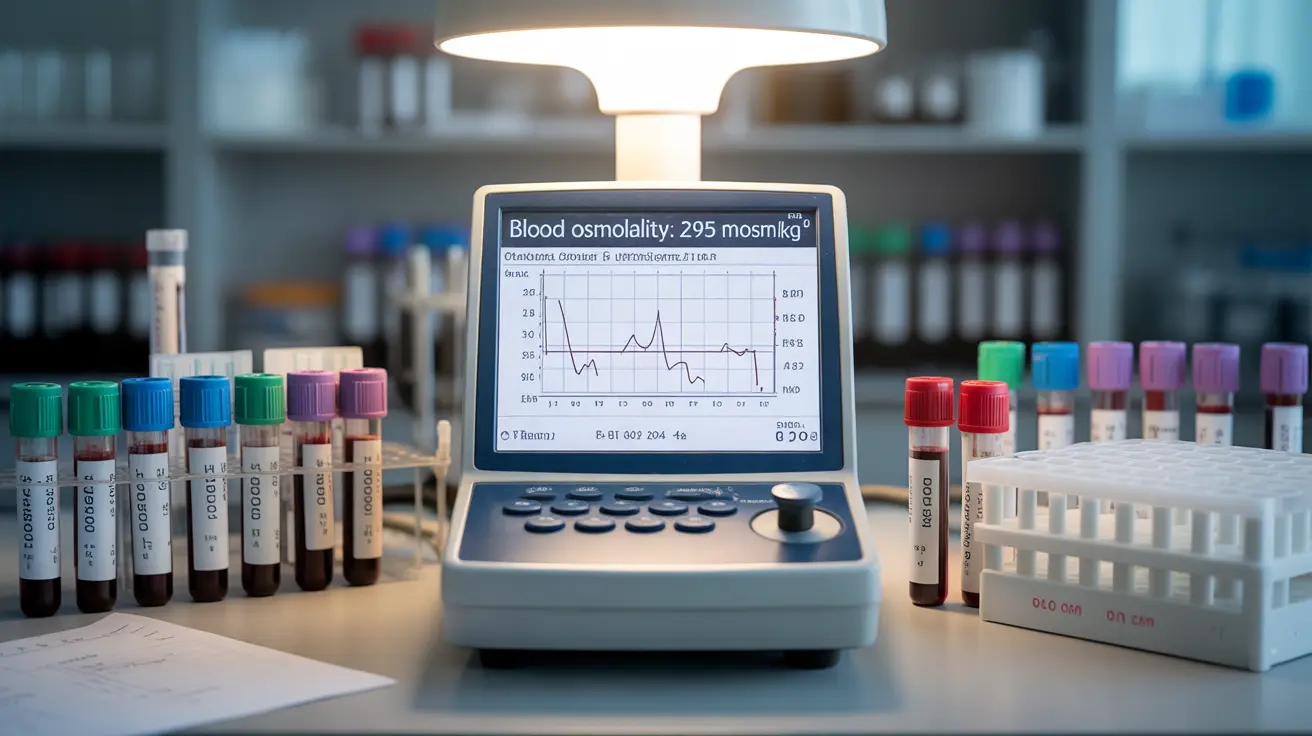Blood osmolality is a crucial measurement that helps healthcare providers assess the balance of water and dissolved particles in your blood. This vital diagnostic tool provides essential information about your body's fluid balance, kidney function, and overall health status. Understanding what blood osmolality means and how it's measured can help you better comprehend your lab results and their implications for your health.
In this comprehensive guide, we'll explore what blood osmolality is, how it's measured, and why maintaining proper osmolality levels is essential for your body's functioning. We'll also discuss the testing process and what various results might indicate about your health.
What Is Blood Osmolality?
Blood osmolality refers to the concentration of dissolved particles (solutes) in your blood. These particles include sodium, potassium, chloride, glucose, and other substances that affect the movement of water between your body's fluid compartments. Normal blood osmolality typically ranges from 285 to 295 milliosmoles per kilogram (mOsm/kg).
Your body maintains blood osmolality within this narrow range through various mechanisms, primarily through the regulation of water balance and electrolyte concentrations. When this balance is disrupted, it can indicate underlying health issues that require medical attention.
The Science Behind Blood Osmolality Measurement
Healthcare providers use specific formulas and laboratory techniques to measure blood osmolality. The most accurate method involves directly measuring the osmolality using specialized equipment, but it can also be calculated using a formula that considers the concentrations of key blood components:
- Sodium concentration
- Blood glucose level
- Blood urea nitrogen (BUN)
- Other dissolved substances
Calculating Blood Osmolality
The basic formula for calculating serum osmolality typically includes:
- 2 × sodium concentration (mEq/L)
- Glucose concentration (mg/dL) ÷ 18
- BUN (mg/dL) ÷ 2.8
Common Causes of Abnormal Blood Osmolality
High Osmolality (Hyperosmolality)
Several conditions can cause elevated blood osmolality:
- Severe dehydration
- Diabetes mellitus with high blood sugar
- Excessive salt intake
- Certain medications
- Alcohol intoxication
Low Osmolality (Hyposmolality)
Conditions that may lead to low blood osmolality include:
- Excessive water intake
- Congestive heart failure
- Liver cirrhosis
- Syndrome of inappropriate antidiuretic hormone secretion (SIADH)
- Certain medications
The Testing Process
A blood osmolality test is a relatively simple procedure that involves drawing blood from a vein, typically in your arm. The sample is then sent to a laboratory for analysis. Your healthcare provider may order this test as part of a comprehensive metabolic panel or when specific symptoms suggest fluid or electrolyte imbalances.
Understanding Your Results
Test results outside the normal range may indicate various health conditions. Your healthcare provider will interpret your results in conjunction with your symptoms, medical history, and other laboratory findings to determine the appropriate diagnosis and treatment plan.
Frequently Asked Questions
What is blood osmolality and why is it important to test? Blood osmolality is a measure of the concentration of dissolved particles in your blood. Testing is important because it helps diagnose conditions affecting fluid balance, kidney function, and various metabolic disorders.
How is blood osmolality calculated and interpreted in lab results? Blood osmolality can be directly measured in a laboratory or calculated using a formula that considers sodium, glucose, and blood urea nitrogen levels. Results are interpreted based on the normal range of 285-295 mOsm/kg.
What health conditions can cause high or low blood osmolality levels? High levels can be caused by dehydration, diabetes, and alcohol intoxication, while low levels may result from conditions like heart failure, liver disease, or SIADH.
How should I prepare for a blood osmolality test and what does the procedure involve? The test requires a simple blood draw. Your healthcare provider may ask you to fast for several hours before the test and provide information about any medications you're taking.
How does the body regulate blood osmolality and what role does antidiuretic hormone (ADH) play? The body maintains blood osmolality through various mechanisms, primarily through ADH, which helps regulate water retention by the kidneys. ADH is released when blood osmolality increases, promoting water reabsorption to restore normal levels.




